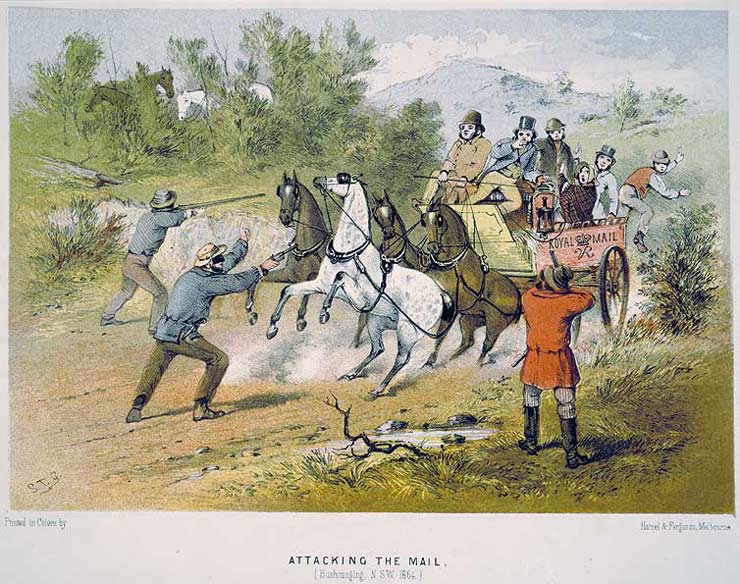 'Attacking the mail, bushranging, NSW 1864'
'Attacking the mail, bushranging, NSW 1864'
TLF ID R3383
This is a coloured print, measuring 19.8 cm x 25 cm, painted by the famous colonial artist Samuel Thomas Gill (1818-80) and published in 'The Australian Sketchbook'. It shows three masked bushrangers holding up the Royal Mail coach with shotguns and muskets. Their horses are hidden in nearby shrubs. The Mail is shown crowded with alarmed passengers and pulled by startled and rearing horses. The painting has the initials 'STG' in the bottom left-hand corner, with the title, 'Attacking the mail, bushranging, NSW 1864', underneath.
